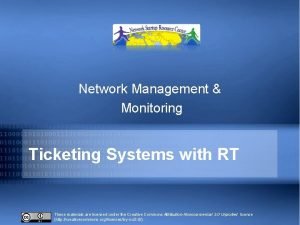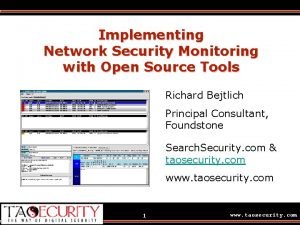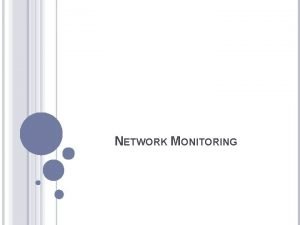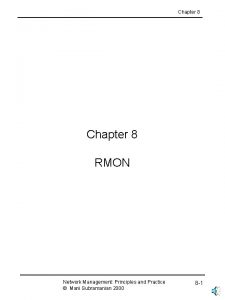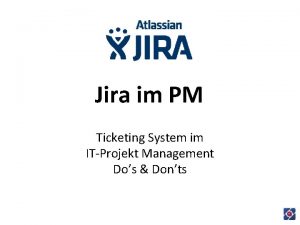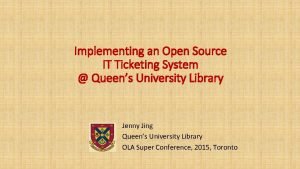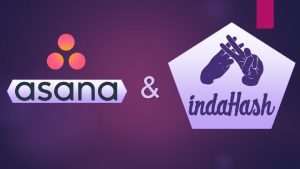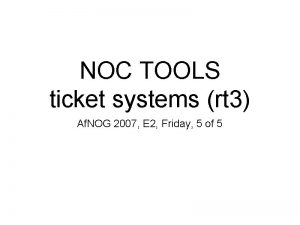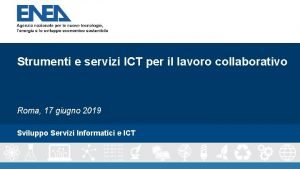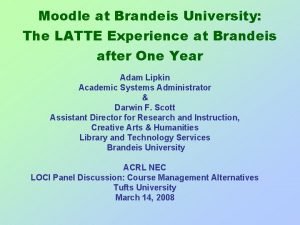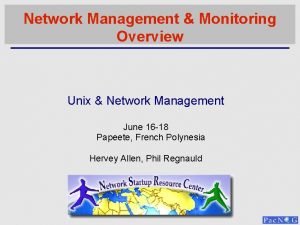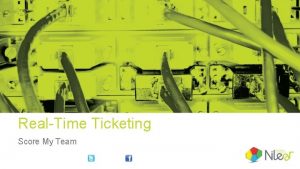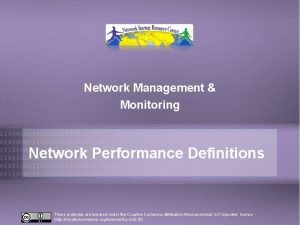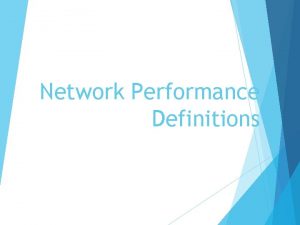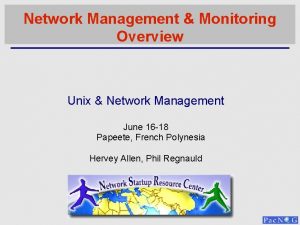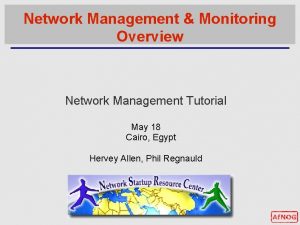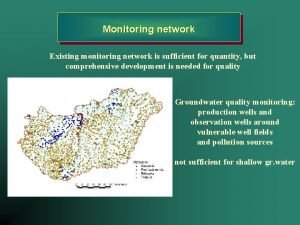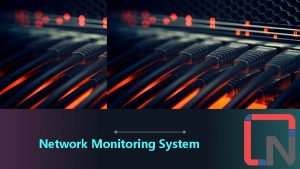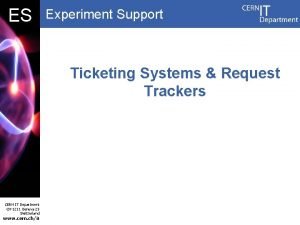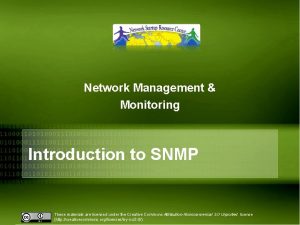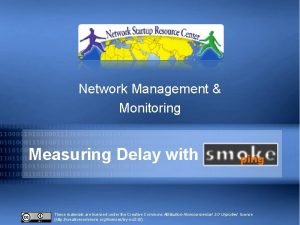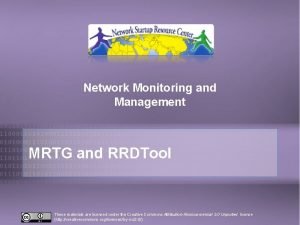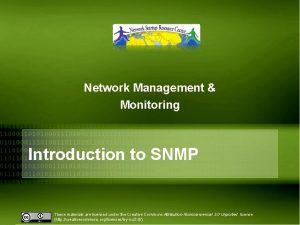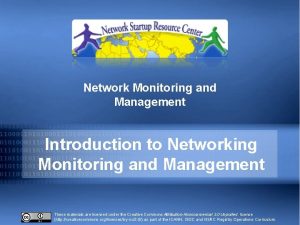Network Management Monitoring Ticketing Systems with RT These

























- Slides: 25

Network Management & Monitoring Ticketing Systems with RT These materials are licensed under the Creative Commons Attribution-Noncommercial 3. 0 Unported license (http: //creativecommons. org/licenses/by-nc/3. 0/)

Why Ticketing Systems?

Ticketing Systems Why are they important? Focal point for help desk communication Use it to track all communications Both internal and external Events originating from the outside: Track all events, failures and issues customer complaints Events originating from the inside: System outages (direct or indirect) Planned maintenance, upgrades, etc.

Ticketing Systems cont. Use ticket system to follow each case, including internal communication between technicians Each case is assigned a case number Each case goes through a similar life cycle: New Open . . . Resolved Closed

Ticketing Systems cont. Help Request with Tickets Ticket System Helpdesk Tech Eqpt --------------------------------T T query | | from ---->| | customer |--- request --->| | | <- ack. -- | | |<-- comm --> | | |- fix issue -> eqpt | |<- report fix -| | customer <-|<-- respond ----| | | |

Request Tracker / Trac RT Heavily used worldwide. Can be customized to your location. Somewhat difficult to install and configure. Handles large-scale operations. trac A hybrid system that includes a wiki and project management features. Ticketing system not as robust as rt, but works well for web-only ticket interface. Often used for ”trac”king group projects. Used for this course: http: //noc. ws. nsrc. org/wiki/

A few others… Bugzilla http: //www. bugzilla. org/ Cerberus http: //www. cerberusweb. com/ e. Ticket http: //www. eticketsupport. com/ itracker http: //www. itracker. org/ Jutda Helpdesk http: //www. jutdahelpdesk. com/ Mystic http: //www. hulihanapplications. com/projects/mystic OTRS (Open source Ticket Request System) http: //otrs. org/ os. Ticket http: //osticket. com/ Simple Ticket http: //www. simpleticket. net/ Trouble Ticket Express http: //www. troubleticketexpress. com/open-source-software. html

RT: Request Tracker http: //bestpractical. com/rt/

What’s it Look Like?

Ticket Management Systems • Why do we use the term “ticket”? • In order to resolve a problem. . . – – – Who wants what? Who's going to work on this? When did they ask, when was it done? How much time did it take (billing, hours)? What's left to do? Everything is summarized and presented in a simple and intuitive manner.

Applications • User support • Security problem management • Issue Tracking / Incident Management

Essential Functionality • Several interfaces – Web, CLI, e-mail, etc. • Multiuser – At different levels: admin, general user, guest • • Authentication and authorization Event history Handles dependencies Notifications

Components • • • Register an event (i. e. , ticket creation) Assign an owner Assign interested parties Maintain change history Inform interested parties of each change Initiative activities based on status or priority

Typical Support Scenario • Lots of email traffic requesting help, request for services, etc. • Archived as text without classification • Very difficult to find current status or problem history. • Sometimes problems were forgotten or never resolved.

RT: Advantages • • • Open source and free Heavily used and tested Very active development Flexible Web interface or control via email

RT: Disadvantages • A bit tricky to install the first time. . . • It's powerful, so you'll need to spend some time learning how it works. – Most distributions have packages that make installation a bit easier: • Red Hat, Fedora, Su. SE, Debian, Ubuntu, Free. BSD, etc.

Problem Classification: Queues RT allows you to create queues so that problems are classified by type: – Services: DNS, IP addresses, Radius, LDAP – Connectivity: Communications infrastructure problems – Security: Attacks, scans, abuse, etc. – Systems: Email accounts, passwords, etc – General help

Web Server Configuration Two Options – Virtualhost http: //rt. host. fqdn – Subdirectory http: //host. fqdn/rt/ Root user ('root') – Change the default password on first login ('password') – Assign the complete email for the root account root@host. fqdn – Assign all user rights: Global -> User Rights

User Creation • Create a userid for each member of your team. • Assign privileges to each user.

Create Groups Create groups of users: – Administering privileges by group is more efficient than doing so for each user.

Create Queues Create queues for problem categories – For example • security • accounts • connectivity – Assign users to each queue • Different between Admin. CC and CC – Don't forget to create email aliases for each queue

rt-mailgate A critical component of RT. The rt-mailgate facility lets us: – Define virtual users on the RT server that correspond to ticket queues in RT. – Allow third-party software (Nagios, Cacti, Smokeping, etc. ) to automatically generate tickets in specified queues via email. – Provide a simple interface through which endusers can communicate with your support organization via RT.

Scrips (actions) For each queue create automatic actions – There is a group of scrips that apply to all queues. • Possible to customize per queue or globally • “scrips” are “snippets of Perl code”

Extensions You can extend the functionality of RT. For example: – Send daily emails to remind users of tickets that have not been “taken” – Send daily emails to each user reminding them of their pending tickets. – Periodically increment ticket priority – You can execute commands via email http: //wiki. bestpractical. com/index. cgi? Extensions

References • Best Practical Web site http: //bestpractical. com/rt • RT Essentials. Dave Rolsky et al. O'Reilly Media, Inc. • Contributions to RT: http: //requesttracker. wikia. com/wiki/Contributions
 Rt ticketing software
Rt ticketing software Enterprise ticketing systems
Enterprise ticketing systems Nsm network security monitoring open systems
Nsm network security monitoring open systems Network monitoring definitions
Network monitoring definitions Remote monitoring in network management
Remote monitoring in network management Network systems design using network processors
Network systems design using network processors Job ticketing
Job ticketing Jira standup plugin
Jira standup plugin It ticketing system open source
It ticketing system open source Otrs service desk
Otrs service desk Balmer lawrie defence travel system
Balmer lawrie defence travel system Request tracker system requirements
Request tracker system requirements Remote ticketing solution
Remote ticketing solution Asana ticketing system
Asana ticketing system Episys ticketing
Episys ticketing Noc ticketing system
Noc ticketing system Easy ticketing
Easy ticketing Gigamail enea
Gigamail enea Papercut job tickerting print software
Papercut job tickerting print software Papercut job ticketing
Papercut job ticketing Brandeis university latte
Brandeis university latte Ats ticketing
Ats ticketing Papercut job ticketing
Papercut job ticketing Sonar network monitoring
Sonar network monitoring Unix network monitoring
Unix network monitoring Multisite network connectivity
Multisite network connectivity
